Jackmanii clematis is a fabulous blooming vine that adds a touch of wonder to anything it grows on. Learn how to grow Jackmanii clematis in all it's awesomeness.
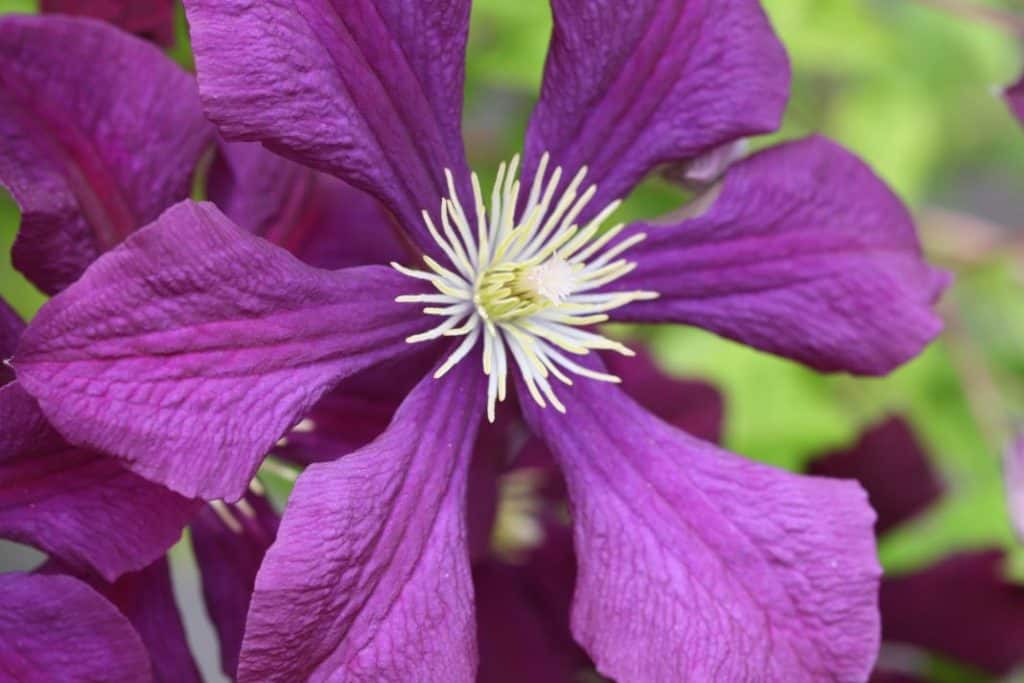
As a teenager I was mesmerized by jackmanii clematis growing on a trellis while in full bloom. It was the first clematis that I bought when I started gardening. No matter how much time goes by, I am always amazed by this wonderful trailing flowering vine.
Jackmanii is intriguing from the earliest buds, to the fully opened blooms in all their finest. Then when the petals fall away, they leave behind the wildest looking seed pods.
Jackmanii is always a star. Every year it feels like I am seeing it for the first time, and I fall in love all over again.
This clematis vine can be grown from seed or cuttings, and is also a popular transplant from the garden centre.
Jackmanii Clematis Is A Perennial
Jackmanii clematis is a hybrid clematis, a cross between two species plants, clematis lanuginosa x Clematis viticella. It is a deciduous perennial flowering vine, and will return to bloom year after year.
Hardiness Zone
This clematis is hardy from USDA plant hardiness zones 4 through 9.
Jackmanii Clematis Care
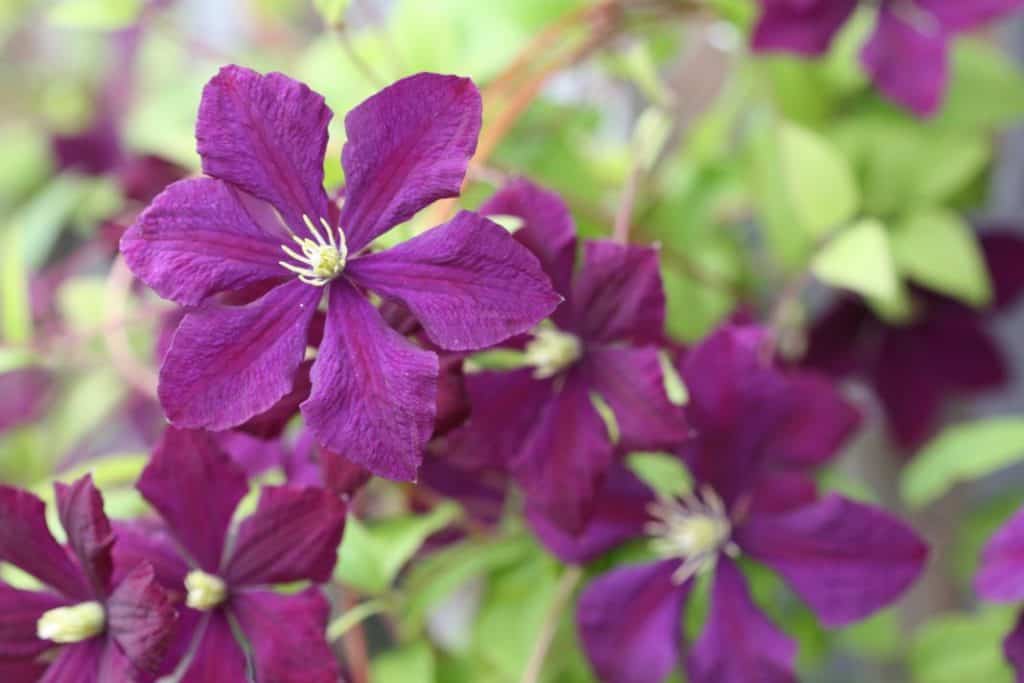
Growing Conditions
To grow Jackmanii clematis successfully it's important to consider these growing requirements:
Sun Requirements
- Best if grown in full sun, however they will tolerate some shade.
- Requires at least six hours of sun per day for optimal growth.
Root Requirements
- Jackmanii prefer to have cool feet, so keep the roots out of the heat if possible.
- This can be done by mulching around the base, or alternatively covering the base with some stone.
- Our Jackmanii clematis is planted in a south facing border along our front deck. It gets full sun, but the deck allows the roots to also have a place in the shade.
Soil Requirements
- Clematis prefer a neutral to slightly acidic and well drained soil.
Water Requirements
- Water clematis in well when it is first planted, and while it is getting established.
- A mulch will help to keep the soil moist.
- After that it doesn't need any special care. Our rainfall is basically enough for our clematis, although we do water in dry spells when possible.
- Clematis prefers moist soil, but doesn't require a lot of watering if well mulched!
Fertilizing Needs
- Jackmanii likes good fertile soil, however be careful with commercial fertilizers.
- Too much nitrogen may cause the plant to grow great foliage, but no blooms.
- The best fertilizer for your clematis is compost!
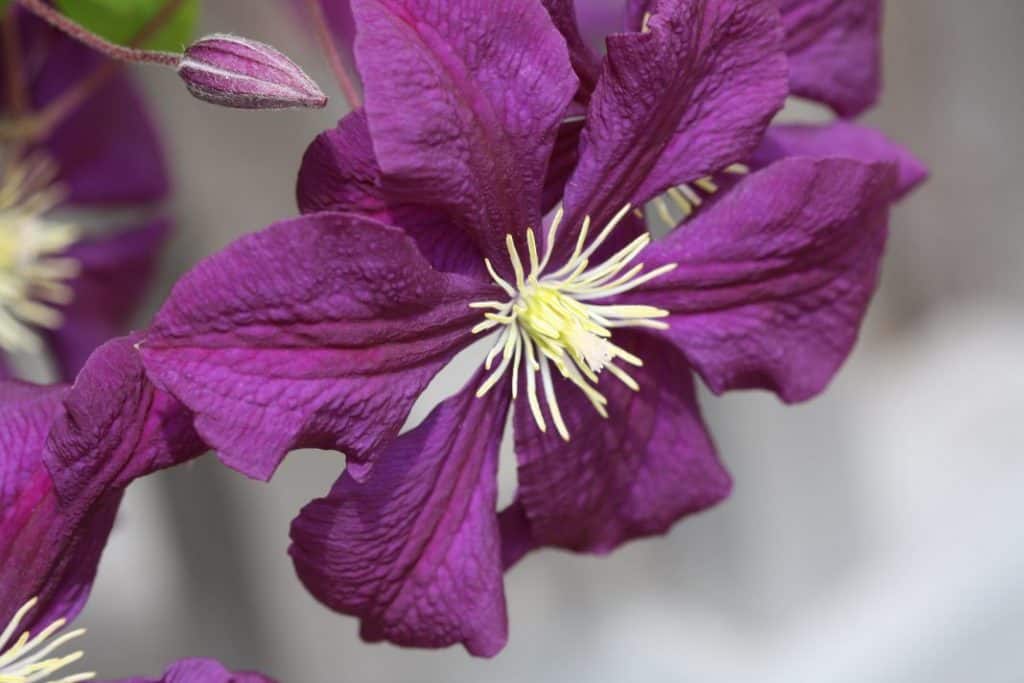
What Type Of Clematis Is Jackmanii?
- Jackmanii is a hybrid clematis, and is considered to to be a Group 3 type of clematis.
- Group 3 clematis bloom on new growth. This is important information to have about your Jackmanii clematis before pruning!
- The old wood therefore can be removed.
- This offers the opportunity to tidy up the plant by removing all the old growth, so that the plant can start fresh from the ground up each spring.
When To Plant Group 3 Clematis
- The best time to plant is in the spring before the plant starts to grow and develop roots.
- If you are planting from an already potted clematis you can plant anytime in spring or summer.
- Dig a hole larger than the root ball, place the potted plant in the hole with the stem at the original root depth, and fill in the hole with good fertile soil.
- Water in well, and use mulch to help hold in the moisture.
What Is The Difference Between Clematis Jackmanii And Jackmanii Superba?
Jackmanii Superba is very similar to it's parent plant, Jackmanii. The flowers are a bit larger and more floriferous.
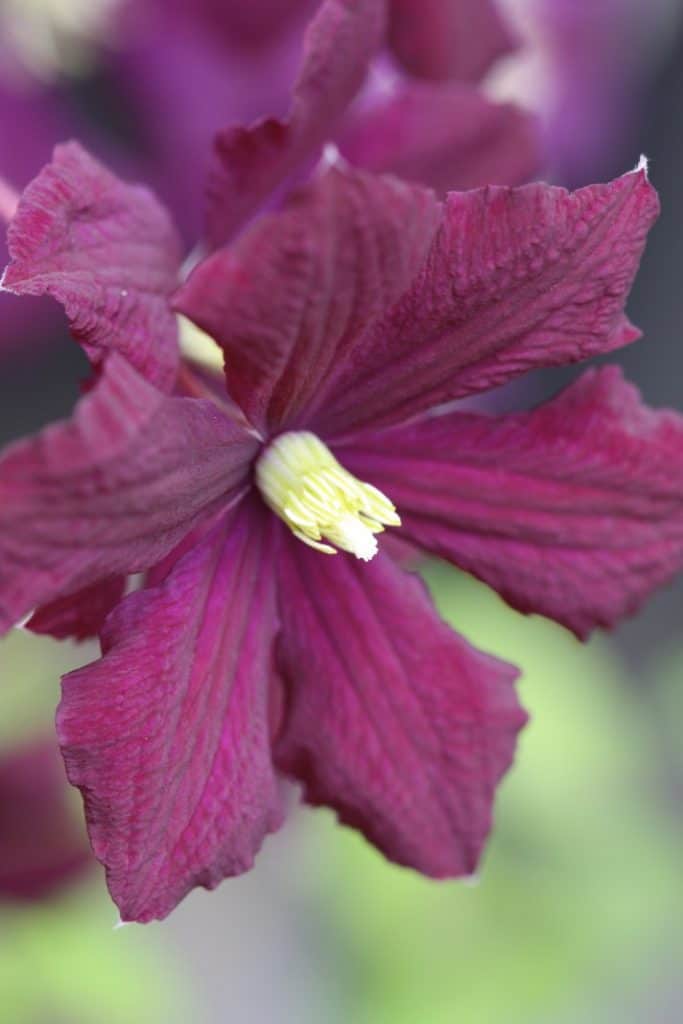
Jackmanii Clematis Size
- This clematis grows from ground level in spring to up to ten feet or three metres long in one growing season.
- The vines slowly reach up towards the trellis, or fencing, or other structures and entwine the stems to hold the vines in place.
- Multiple branching stems are produced and the flowers are sometimes five inches across, putting on a wonderful display.
Clematis Jackmanii Growth Rate
- Jackmanii grows from the ground up, within one season. Here in our garden in mid April there are still no signs of life on this plant.
- Within two months this plant will be large and in full bloom.
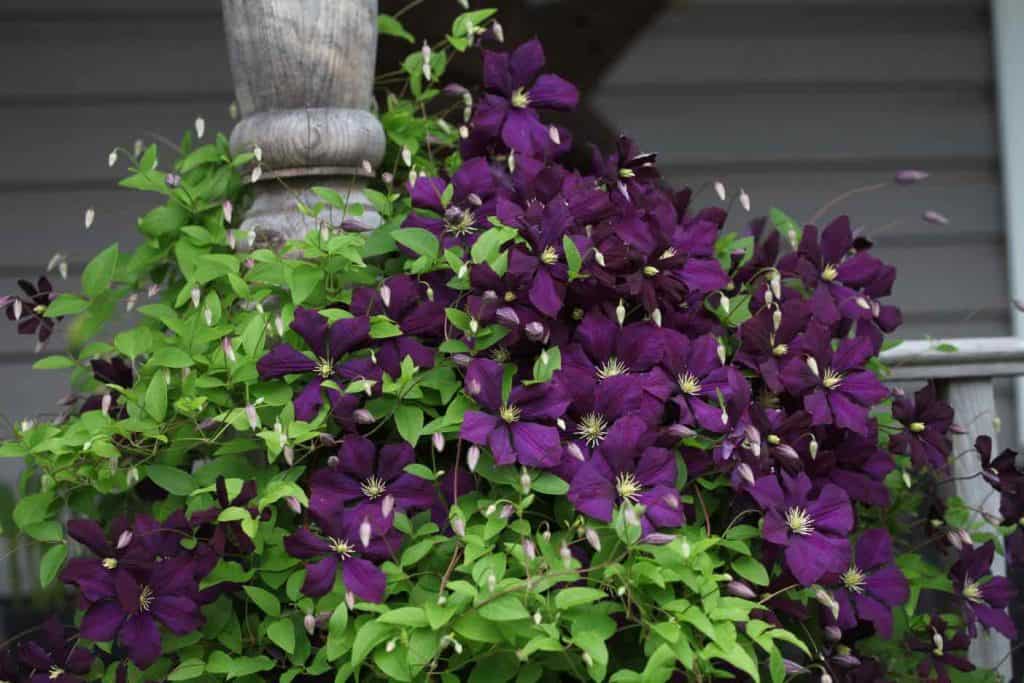
When Does Jackmanii Clematis Bloom?
Jackmanii blooms towards the end of June into July for us here in zone 5b.
It produces occasional blooms throughout the season as well.
Grow Jackmanii On A Trellis
Learning how to grow Jackmanii clematis on a trellis is very easy.
- Jackmanii looks wonderful growing up a trellis. It will grow and latch on for support and securely fix itself into place.
- Train the stems as they advance by lightly securing them in place with a tie or twine.
- Alternatively you can grow clematis on other supportive structures as well, such as a deck or fence, or a mailbox post!
- We grow ours on our deck, and I train the stems to grow along the railing. I tie them in place usually with some jute twine.
- If you have other plantings nearby, they often will attach to these too.
- I usually just pull the stems off of the plant they are attached to, like my pyramidal cedar, and redirect them and attach them to the location where I would like them to grow.
Jackmanii Clematis Problems
Why Is My Clematis Jackmanii Not Flowering?
Clematis sometimes produces lots of foliage, but no blooms.
Some common reasons for this include:
- Too much nitrogen, which feeds the foliage, but prevents blooming
- Lack of nutrients in the soil
- Not enough sunlight- should have at least 6 hours
- The plant may be too immature- clematis plants will need at least three years to mature if grown from seed, to produce blooms
Pests And Diseases
Clematis can be prone to wilt , and Jackmanii is no exception. One of the parents of this cultivar, Clematis lanuginosa has a vulnerability to wilt. The other parent, Clematis viticella has a resistance to wilt.
Here is a picture of Jackmanii with wilt, from the Toronto Master Gardener's website.
Pruning Jackmanii Clematis
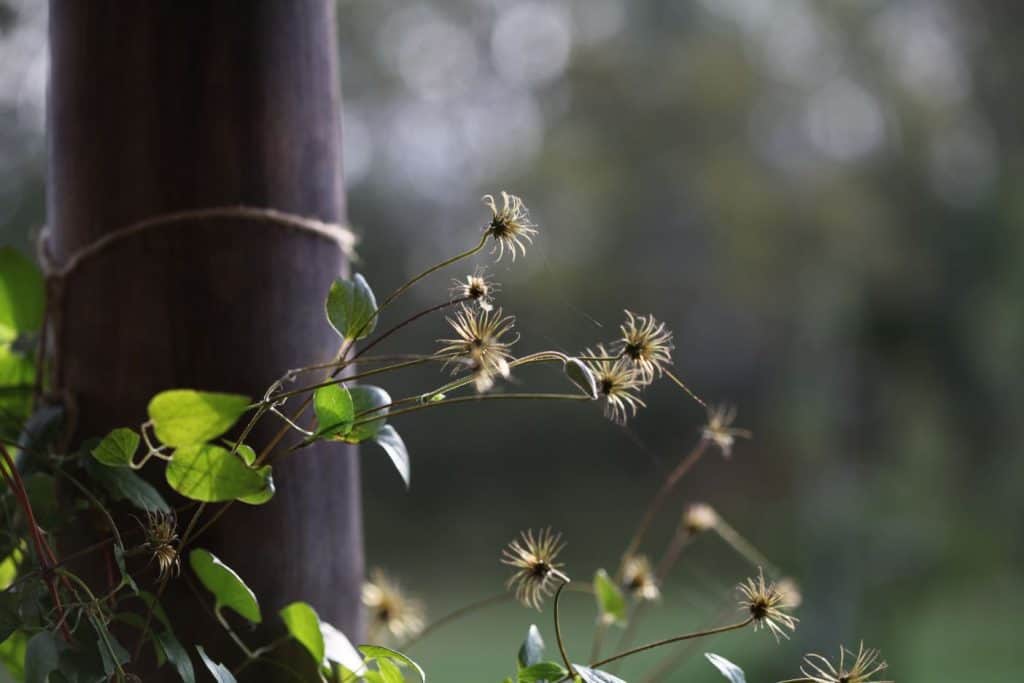
What Pruning Group Is Clematis Jackmanii?
- It's just as important to know how to prune, as it is to know how to grow Jackmanii clematis.
- Jackmanii is in the Group 3 clematis group, meaning it only blooms on new wood or stems.
- All old stems should be removed from the plant before it starts to grow in spring.
- Jackmanii clematis can be pruned in late fall, winter, or early spring.
- I generally prune my clematis in December when I decorate my deck for the holidays. The stems are brown and brittle.
- I cut them off the deck with hand held clippers. It's quite an easy task.
- I trim them down a bit further in spring if need be.
- Trim down to the base, allowing about a foot of stem to remain, as in the photo below.
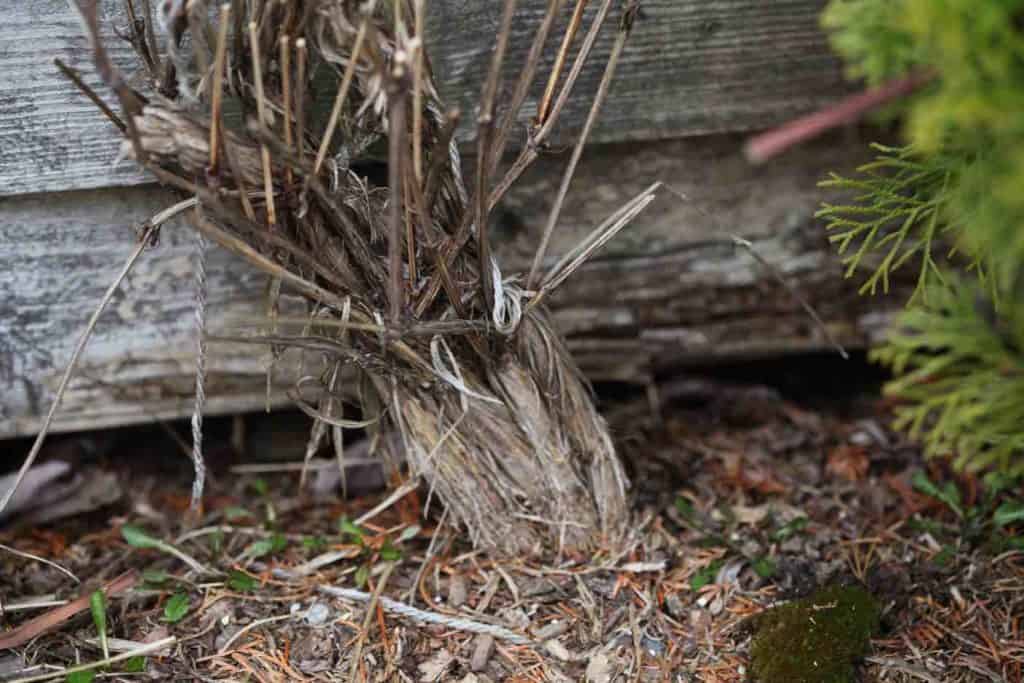
Jackmanii Clematis Winter Care
These clematis do not require any special winter care.
Jackmanii clematis are dormant in winter. You can mulch them if you wish, but they are hardy to zone 4 and should tolerate the cold temperatures without any difficulty!
Are Clematis Deer Resistant?
Unfortunately clematis are not deer resistant.
Deer will eat them if they can, so protect from deer if possible.
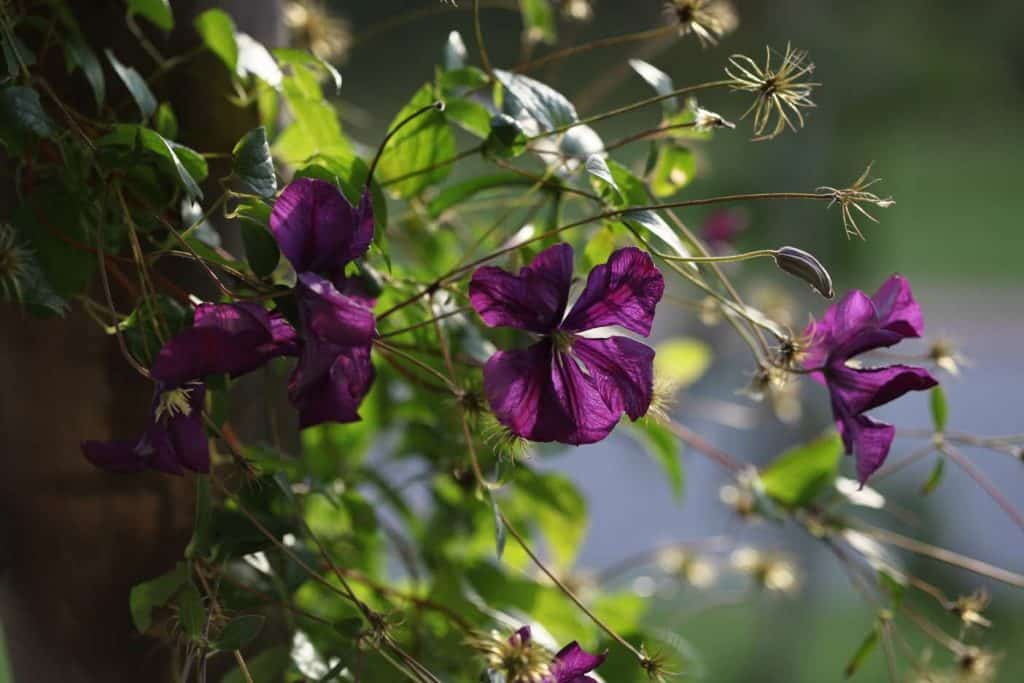
Overgrown Clematis
If you have an overgrown Jackmanii clematis, just wait until the appropriate time to prune it back.
Prune once the plant has become dormant, and the growth has died back and turned brown. Prune down to the base, leaving the base and stems about a foot from the ground.
Removing all this growth will give the plant a fresh clean start in spring.
Clematis Jackmanii Pronunciation
- There is no right or wrong way to pronounce clematis, although some may disagree.
- It can be pronounced with the emphasis on the first or second syllable, such as CLEM -a-tis or Clem -AH -tis.
- In our area of the country we pronounce it Clem-AH-tis.
- Jackmanii is pronounced several different ways as well.
- Some pronounce it so that both i's are articulated, such as Jack-man-i-I.
- Others pronounce it with emphasis on the second syllable, and only articulate one i, such as Jack-MAN-i.
- I personally pronounce the latter .
This clematis was bred and introduced in 1862 by horticulturalist George Jackman II, from where it's name originated-jackmanii.
I hope that you have found this information on how to grow Jackmanii clematis in the garden helpful.
If you decide to grow this lovely flowering vine, I'm sure that you will not regret it!
If you enjoyed this post you may also like:
How To Grow Yarrow- A Beneficial Garden Plant
Planting Milkweed Seeds In Winter
If you have any comments or questions, they are always very welcome!
PIN IT FOR LATER!
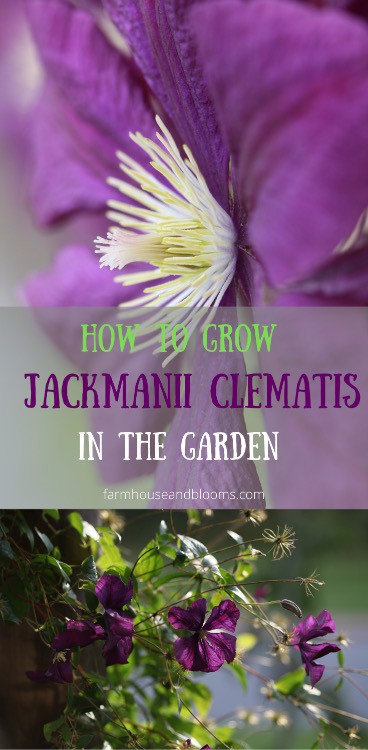
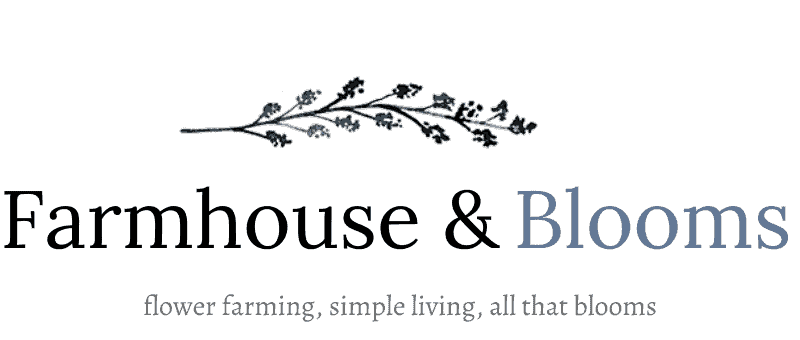

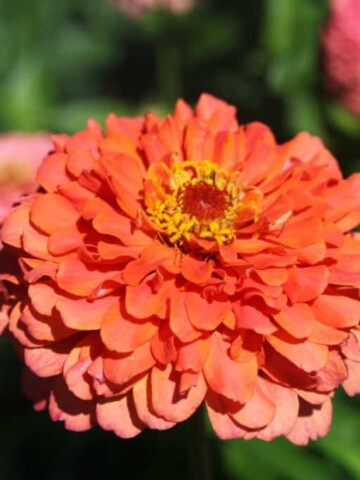
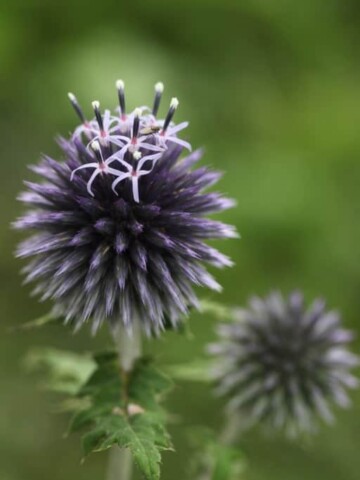
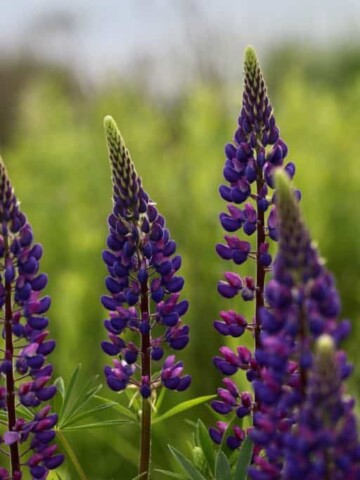
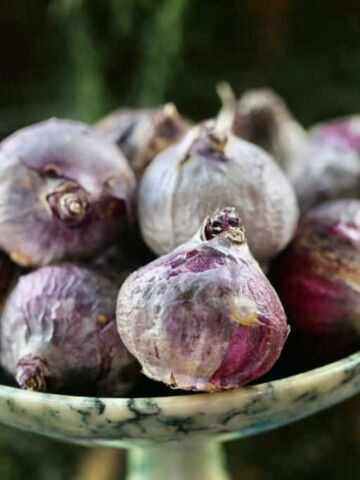
Leave a Reply